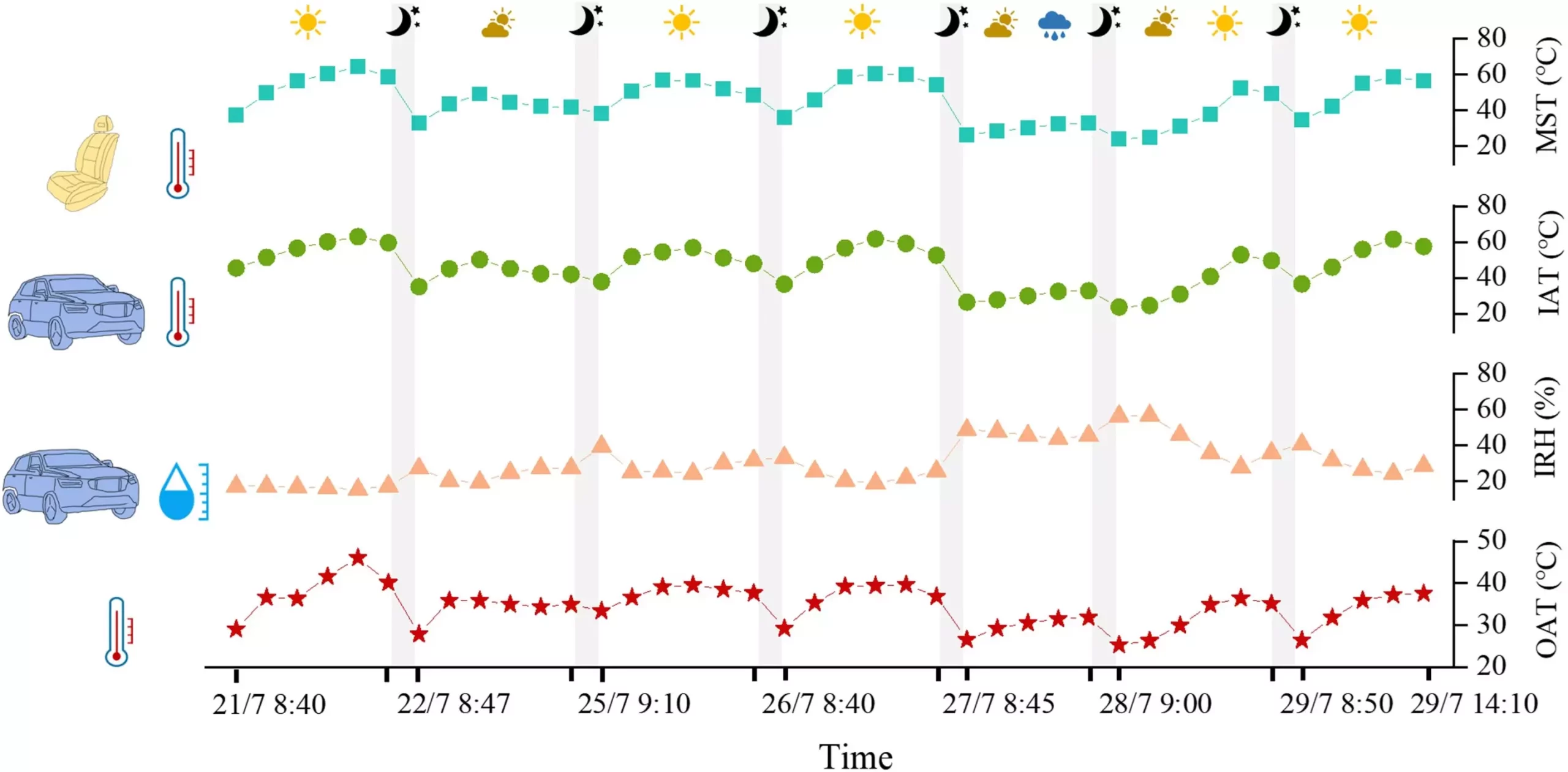For many consumers, the “new car smell” embodies the ultimate indulgence—a sensory experience that signifies freshness and luxury following the purchase of a new vehicle. However, an unsettling study reveals that this enticing aroma emanates from volatile organic compounds (VOCs) that pose serious health risks. Conducted by Jianyin Xiong, Shaodan Huang, and their team, this research highlights the high ambient levels of harmful chemicals, such as formaldehyde and acetaldehyde, which can drastically affect well-being. While the fragrant essence of a new car may charm buyers, it conceals a darker reality tied to vehicle interiors, particularly as climate change raises summer temperatures even higher.
The Harsh Reality of VOC Exposure
The allure of new cars quickly dissipates when confronting the sobering health implications of VOC exposure. These compounds, originating from materials like upholstery, carpets, and sealants, can inflict a wide range of adverse effects on human health. Symptoms such as headaches, respiratory issues, eye and throat irritation, and, more alarmingly, lung disease emerge as serious risks for consumers who may spend prolonged periods in their vehicles. This situation escalates on hotter days when the concentration of VOCs skyrockets due to increased cabin temperatures. The study’s findings indicate that on scorching days, levels of formaldehyde in passenger cabins can exceed regulatory limits—speaking to a looming public health concern that beckons for immediate attention.
Data Insights and the Role of Climate Change
This study utilized an extensive dataset measured over several hazardous summer days, with temperatures soaring between 25.3 °C (77.5 °F) and 46.1 °C (115 °F). The findings are not just alarming; they illustrate a striking reality for a climate-changed world. Elevated temperatures exacerbate the outgassing of VOCs, creating toxic swimming pools of air inside vehicles. This growing problem highlights the crucial intersection between climate change and public health. As consumers, we often ignore how temperature impacts our lives, but the study clearly indicates that our daily environments, even those rendered “safe” by industry regulations, can betray our health.
The Need for Smart Solutions in Automotive Design
One astute observation from this research was the development of a machine learning model that identified material surface temperatures as a primary driver for elevated VOC levels in vehicles. This innovative approach not only provides a way to predict in-cabin VOC concentrations but can also aid manufacturers in designing safer, smarter vehicles. By integrating this technology into the vehicle’s control systems, we can begin to mitigate these health risks before they escalate. The incorporation of deep learning models represents a paradigm shift in automotive safety, where consumer health and technological advancement can coalesce in beneficial ways.
The study raises essential questions about regulatory standards, consumer awareness, and automotive design’s responsibility to protect health. The enchanting “new car smell” should prompt consumers to question: at what cost does this allure come? As awareness grows, there is imperative support for legislation and technological innovation focused on enhancing air quality inside vehicles, shielding us from the hidden dangers within our beloved rides.

